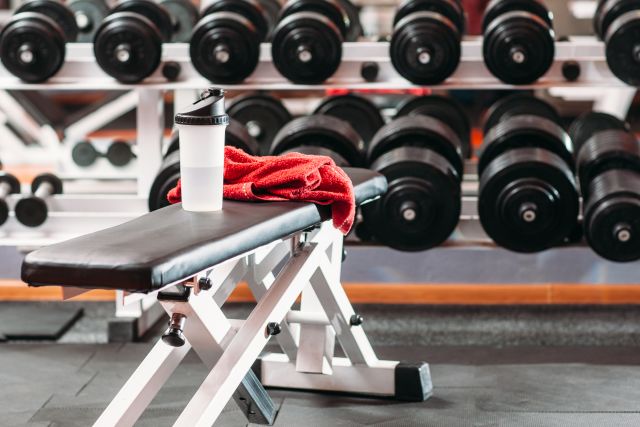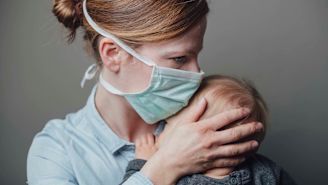Updated on March 3, 2022.
Chances are you’ve heard of staph (Staphylococcus aureus) or MRSA (methicillin-resistant Staphylococcus aureus). These are bacteria that can cause potentially dangerous and tough-to-treat infections. What you may not realize is that these microscopic organisms may be living on your body right now.
In fact, nearly 1 in 3 people carries staph on their body, mostly in the nose or the armpits, groin, or buttocks. Roughly two in every 100 people also carry MRSA in their noses. Most of these people don’t develop serious infections as a result.
All bacteria have a specific environment that is their ideal breeding ground, says Maulikkumar Patel, MD, an internist at Memorial Health University Medical Center in Savannah, Georgia. “Staph likes to live on the skin, so that’s predominantly where we see it,” he explains.
For the most part, staph that lives on the surface of the skin is harmless. But when it gets past that barrier—such as through an open cut, wound, or scrape—it can cause problems.
“Staph has the ability to get under our skin, literally and figuratively,” Dr. Patel says. “And when it does, that’s when we start to see the common manifestations of an infection.”
Treating staph infections
Since MRSA is resistant to some antibiotics, it’s more difficult to treat. That could mean serious complications, such as sepsis, a life-threatening response to infection.
“Staph infections were originally cured with penicillin,” Patel says. “But what has happened is that the bacteria, as we’ve developed medication to kill it, has developed its own way to resist antibiotics.”
There are different antibiotics to target certain forms of staph infections, including MRSA. But understanding how staph spreads and how you can avoid exposure could help reduce your risk for infection in the first place.
How staph spreads
Staph can spread directly from one person to the next when contaminated hands or skin touch. Staph could also spread through commonly used items, such as towels, makeup, clothing, razors, door handles, athletic equipment, and remote controls. The bacteria can live on some surfaces for a long time, depending on the material. For instance, staph can survive on cotton or polyester fabric for several weeks.
Staph and MRSA can also spread among groups of people living or spending time in unsanitary or crowded environments. That includes long-term care facilities, military training camps, childcare centers, and prisons. Playing contact sports, which can result in cuts and abrasions, also ups your odds of developing a staph infection through contact with another person’s skin or shared equipment.
Keep in mind, people who are carrying staph can spread the bacteria to others, even if they don’t have signs of infection.
Types of staph infection
Most staph infections involve the skin, potentially leading to conditions including the following:
- Folliculitis: Tiny, acne-like breakouts that occur when bacteria invade the hair follicles
- Boils: Warm, pus-filled bumps that form underneath the skin in hair follicles
- Impetigo: An infection that usually affects children, which causes red sores to form on the face around the nose and mouth. These sores rupture and ooze, then they form a yellowish, honey-colored crust. The infection may be spread to other parts of the body by contaminated hands, clothes, and towels.
- Stye: A red, tender bump that forms on the edge of the eyelid
- Cellulitis: A deeper and more serious skin infection that spreads to the tissue underneath the skin, causing redness and tenderness and, in more serious cases, pain, chills, or fever
A staph infection can also affect the gastrointestinal system. The bacteria can produce toxins that lead to food poisoning. People who are carriers of staph can also contaminate food they are handling or preparing if they don’t wash their hands first.
The risks of staph infection
Patients face severe risks, including death, when a staph infection spreads to the blood, or to the joints, bones, lungs, or heart. The risks of this type of serious infection are higher for those with weakened immune systems, burns, surgical wounds, or chronic conditions like diabetes, kidney disease, or rheumatoid arthritis.
“The immune system is like our body's own infantry to fight off any bacteria, virus, or infection,” says Patel. “But people with compromised immune systems aren’t able to respond to fight off germs and infections as the average person would, so they’re also more likely to have more severe forms of staph infections.”
Other people at higher risk for a serious staph infection include intravenous (IV) drug users, men who have sex with other men, hospitalized patients undergoing medical procedures, and people with surgically implanted devices or tubes, such as urinary catheters or feeding tubes.
Serious staph infections can also affect otherwise healthy people.
How to avoid staph
Maintaining good personal hygiene is the number-one way to lower your risk of any type of staph infection, according to Patel. This includes washing your hands well and often.
“Thoroughly washing your hands with soap and water for the right amount of time, using the right technique, is the best way to protect yourself,” he says.
This means rubbing your soapy hands together for at least 20 seconds, or long enough to sing the ABCs. Be sure to clean the backs of your hands, the areas between your fingers, and under your nails before rinsing your hands with water.
“You'll be surprised the number of times I've been in a public restroom where I've seen people walk out without washing their hands properly,” says Patel. “It’s scary.”
If you don’t have access to soap and water, using an alcohol-based hand sanitizer is a good alternative, as long as you choose the right one and use it properly. Look for a hand sanitizer than contains at least 60 percent alcohol, the Centers for Disease Control and Prevention recommends. Before applying the liquid or gel, remove as much dirt or debris from your hands as possible. Read the product label for instructions and use as much as directed to ensure its effectiveness. Then, rub the sanitizer over all surfaces of your hands until they are dry.
Patel recommends these additional precautions to help reduce your risk of a staph infection:
- Keeping cuts and scrapes clean and covered
- Avoiding contact with other people’s wounds or cuts
- Not sharing towels, razors, or other personal items
- Removing sweaty clothes and showering after exercise, sports, or other physical activities
- Moisturizing with lotion or petroleum jelly after showering
- Cleaning sports equipment with an antiseptic
- Avoiding saunas or hot tubs if you notice a person with an open sore using them
- Minimizing your contact with locker room surfaces (always put a clean towel down on benches or floors before you sit or stand)
- Wearing shower shoes in gyms and public facilities, particularly if you have open wounds or blisters on your feet
- Regularly disinfecting surfaces like counters, doorknobs, phones, and computer keyboards
- Sanitizing linens—especially when you have a cut or sore—by using hot water, the hottest dryer setting and, if possible, bleach
- Washing gym clothes after each use
When to see a healthcare provider
If you do develop a staph infection, your symptoms will depend on where the infection is located. A cut, bug bite, or other wound that becomes infected with staph or MRSA may lead to red, swollen, pus-filled spots on the skin. The area may be warm and painful to the touch and you may develop a fever.
See a healthcare provider (HCP) right away if you notice any of these symptoms. It’s important to identify and treat an infection before it worsens and spreads to your bloodstream, Patel adds. “Check yourself periodically for cuts and abrasions in the crevices of your hands and feet,” he recommends.
Most infections are easily treated with oral or topical antibiotics. More serious infections, including those caused by MRSA, may require different antibiotics or a longer course of treatment. In some cases, IV antibiotics may be necessary. If the infection surrounds a surgical device, an HCP may recommend surgery to remove the device. Sometimes, draining pus or clearing out the infected wound can also promote healing.







